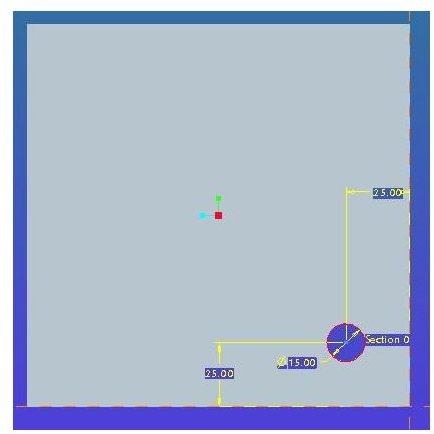What is Modeling Strategy for 3D CAD software
What is modeling strategy?
Modeling strategy deals with the way you are going to model your design project. In order to make a good modeling strategy, you have to have fair amount of idea about the design intent of the project. You should be in position to judge the dimensions or relations of your 3D CAD model which may get change over the whole product life cycle. Modeling also includes, which 3D CAD modeling approach you are going to use in your design project, will it be top down approach or bottom up approach. Let’s discuss about the elements by defining or considering of which you will be able to chalk out a good modeling strategy:
-
Design intent: design intent defines the purpose and functions the finished product should serve. By knowing the purpose of the finished product you will be in position to know which are the dimensions, which may be needed to be modified during the product development life cycle. Your aim is define such a modeling strategy where you will be able to provide higher amount of flexibility to your model for design changes, which will occur at the later stage of product development life cycle.
-
Feature based modeling: Each part of a 3D CAD model essentially consists of a group of features and these features are interrelated with each other. Certain amounts of dependencies are there between the features. This fact is important from the prospective of modeling strategy, because you should be very clear about which feature you may have to delete or suppress at the later stage of your design and place the features accordingly.
Let’s take an example of draft, radius and shell. In case you have to use all the three features in a single place of pro engineer model, then it is most likely you will first use draft, then radius and then fillet. Of course there is no hard and fast rule for that but it is said to be a good modeling strategy.
Parametric design: One of the advantages of 3D CAD modeling software is its parametric nature. What is parametric? Let’s take a simple example: You have a cube with 100 mm sides and have a vertical through hole of 15 mm dia. connecting two parallel surfaces. If you look from front , it will look like below:
The centre of the whole is 25mm from the two perpendicular surfaces. Now if you modify the dimension of the cube from 100 to 75, then the hole will also shift automatically so that the dimensions 25 mm from the two perpendicular surfaces remain maintained. This is because of parametric nature of 3D CAD software.
So, in parametric designs the inter relations between the features are maintained. When one feature is modified then the dependent features are also get modified dynamically by 3D CAD software.
- Associativity: Most of the 3D CAD software maintains associativity between its different modules (like, part, assembly, drafting etc.). Suppose you have an assembly of say three parts and one of those three parts are having five features. Now if you modify one of the features of one of the part and open the main assembly and regenerate then you will see the changes of the part got reflected in the assembly. Associativity is very important in order to keep the design intent maintained.
- Modeling approach: Two types of modeling approach are followed in industry:
Top down approach: You will be analyzing your product from the finished product’s prospective and drill down the assemblies, sub assemblies and parts involved and their internal relations. You will start from layout/skeleton first and then come down designing/modeling assemblies, parts etc. Biggest advantage of this approach is the flexibility of future changes.
Bottom up approach: You will be analyzing your product from component level and go up to the master assembly level in this approach. You will be modeling each part and then will be assembled in next higher level assembly and so on. Although the end results are same as top down approach but design intent is not completely privileged, in the sense, there always will be certain amount of risk involved of design conflicts for design changes.
